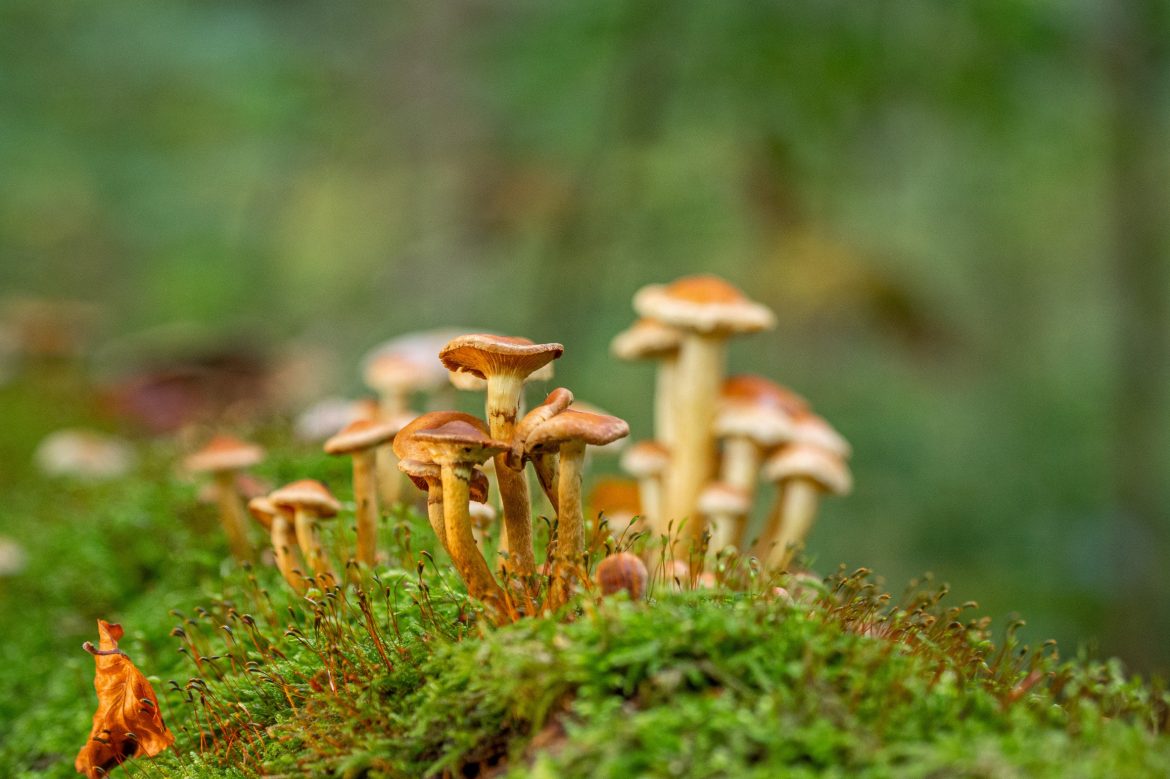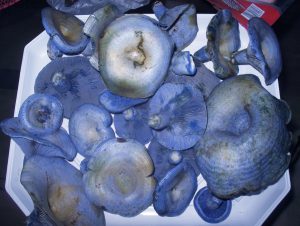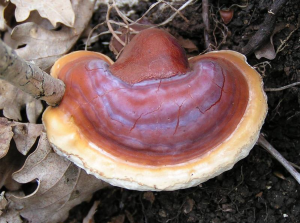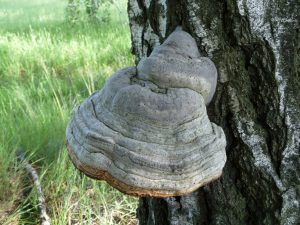
The Rise of Mushrooms
Mushrooms are a preferred delicacy all around the world, praised for their nutritional value. They are rich in fiber, vitamins, and antioxidants, and some even have antibacterial and anti-cancer properties. In the past few years, they have been frequently making headlines due to their health benefits. These superfoods are now in the spotlight for their ability to reduce the risk of depression, certain neurodegenerative diseases, and even cancer.
Mushrooms are the highest dietary source of ergothioneine, which is a potent antioxidant that protects cells. Our bodies cannot synthesize ergothioneine, so it must be taken externally. A study by Pennsylvania State University researchers has recently linked this substance with a lower risk of cancer. Their findings suggest that individuals who ate 18 grams of mushrooms daily had a 45% lower risk of cancer compared to those who did not eat mushrooms, with the strongest associations found for breast cancer. For those interested, the highest ergothioneine content is found in shiitake, maitake, oyster, and king oyster mushrooms, although other species have similar health benefits.
Just one month later, the same research group published the results of a population-based study on mushroom intake and its possible anxiety-reducing effects. Focusing once again on ergothioneine along with other bioactive compounds such as vitamin B12, potassium, and nerve growth factor, they used data from over 24,000 adults and found that regular consumers of mushrooms had lower odds of having depression.

Furthermore, certain other species of edible mushrooms have been shown to stimulate the expression of neurotrophic factors, which may have an impact on preventing neuropsychiatric disorders including depression. In fact, in February 2023, researchers from The University of Queensland discovered the active compound in lion’s mane mushroom (Hericium erinaceus) that boosts nerve growth and enhances memory. When they used the compounds isolated from this mushroom species on cultured brain cells, they observed that it promoted neuron projections, extending and connecting to other neurons. The discovery may serve applications that could treat and protect against neurodegenerative cognitive disorders such as Alzheimer’s disease.
Mitigating the impacts of climate change
One current global concern is the footprint of food production. As the world population keeps climbing, the amount of forested land cleared for agricultural practices also increases every year. According to data for 2010 to 2020, a net loss of forest area per year is as high as 4.7 million hectares. While intensive crop farming comes with problems like the use of fertilizers, pesticides, and high amount of water, beef farming makes an additional contribution to climate change by emitting greenhouse gases.
To tackle all these problems simultaneously, some researchers have started looking into a novel approach: Using the partnership between trees and fungi. Mushrooms are merely the above-the-ground parts of fungi, which form “food networks” in the form of incredibly vast underground webs. Fungi are a crucial part of the natural nutrient cycle in terrestrial ecosystems. They recycle both organic and inorganic compounds by decomposing organic matter and releasing nutrients back into the soil. As fungi grow and reproduce, they form collaborations with plants and make these nutrients available to them.

Planting trees that can produce large and edible mushroom fruiting bodies, which have high nutrient value, may indeed have a huge positive impact against climate change. One candidate offering high potential is the blue milk cap (Lactarius indigo), which is easy to identify due to its bright blue pigmentation. Besides its high content of dietary fibre and essential fatty acids, the species also has pharmacological potential with its antibacterial properties and ability to kill cancer cells.
Researchers state that the annual protein production through beef farming is around 4.76-6.99 kg per hectare. When the same hectare is used for planting trees hosting the milk cap fungus, annual protein production could be 7.31 kg. Plus, it means trees instead of cleared lands and being free of the above-mentioned negative impacts on the ecosystem.
Professor Paul Thomas, Honorary Professor at the University of Stirling’s Faculty of Natural Sciences and the lead author of the study say, “We found that production of fungi using this system can lead to a very significant sequestration of greenhouse gas.” He states that all other major food categories lead to greenhouse gas emissions during production and adds, “We calculate that if this system was combined with current forest activities, the food production levels could be huge. If it had been used in forestry that has taken place during the last ten years, we could have produced enough food to feed 18.9 million people annually.”
One mushroom to rule them all
Ganoderma lucidum is a mushroom that grows on dead hardwood trees. It has long been used in traditional Chinese medicine. Although the species itself is not edible due to its hard texture, it can be ingested in powder or liquid form. It is rich in bioactive polysaccharides, triterpenoids, and polyphenols. Just like all other Ganoderma species, G. lucidum also contains ganoderic acids, which are known for enhancing the immune function of cells among other therapeutic benefits.
A study led by The Korea Institute of Science and Technology in 2020 investigated the ganoderic acid content of this species and its different effects when the mushroom was dried in different ways. They reported that the active ingredient was destroyed when the mushroom was dried for an extended period of time or the extraction was performed at 80°C or higher while air-drying at 60°C resulted in excellent anti-inflammatory properties and freeze-drying at -50°C led to antioxidant and antidiabetic activities. The extract from air-dried Ganoderma lucidum was also shown to effectively suppress skin inflammation.

In February 2023, researchers from the Hefei Institutes of Physical Science of the Chinese Academy of Sciences confirmed that G. lucidum was also an essential prebiotic. Prebiotics promote the balance of the gut microbiota, which boosts and regulates the immune system in turn.
In the meantime, a team of researchers at Johannes Kepler University was investigating G. lucidum on an entirely different level. They focused on the skin that the mushroom grows to protect itself from bacteria and other fungi, curious about the possibility to use this skin as a biodegradable base for computer chips. They found that the skin was flexible, to the point of withstanding even after 2,000 repeated bends. It was also able to endure high temperatures and was a good insulator. The researchers also reported that the skin was very long-lasting if kept away from light and moisture, but would quickly decompose if intentionally exposed to these conditions. All these qualities made it a perfect candidate for a good chip substrate, and it could even be used to make battery components.
Novel sustainable materials
While mushrooms are no longer just vegan alternatives as meat substitutes, the world of fungi, in general, is also expanding beyond the production of new medicines. They are increasingly becoming popular in a broad range of studies as they keep attracting interest in technological R&D, and materials science in particular.
Fungi are already being used in the production of packaging materials such as Styrofoam alternatives, skincare sponges, and cruelty-free leather. These are all based on utilising the fungi’s mycelium, which is the actual root network of the organism below the ground. Completely natural, lightweight, strong, and cheap-to-produce mycelium is fast becoming a more attractive and affordable alternative to fossil fuel-derived materials.

Their above-the-ground parts, mushrooms are also drawing attention as alternative materials. A research group from VTT Technical Research Centre of Finland is looking into ways of mimicking the complex structural, chemical, and mechanical features of mushrooms to create new materials that could be used as substitutes for plastics. Their preferred species is the hoof mushroom (Fomes fomentarius), which grows on the trunk of various species of trees as a pathogen. The hoof mushroom is extraordinarily lightweight, but is able to endure fallen branches. It also has natural protection from insects, thanks to its acrid taste. Such features make it a good candidate for being used in the production of mechanically robust and lightweight sustainable materials –including sports equipment, body armour, impact-resistant implants, exoskeletons for aircraft, electronics, or surface coatings for windshields.
REFERENCES
- 1. https://phys.org/news/2023-03-mushrooms-trees-millions-mitigate-effects.html
- 2. https://phys.org/news/2022-01-humble-mushroom-forests-climate.html
- 3. https://phys.org/news/2023-02-highlights-therapeutic-importance-ganoderma-lucidum.html
- 4. https://medicalxpress.com/news/2020-10-efficacies-ganoderma-lucidum-treatment-skin.html
- 5. https://medicalxpress.com/news/2023-02-mushrooms-magnify-memory-boosting-nerve.html
- 6. https://techxplore.com/news/2022-11-mushroom-skin-base-chips.html
- 7. https://phys.org/news/2023-02-mushrooms-plastics-high-performance-ultra-light-materials.html
- 8. https://www.sourcegreen.co/food-packaging/mycelium-packaging-styrofoam-alternative/
